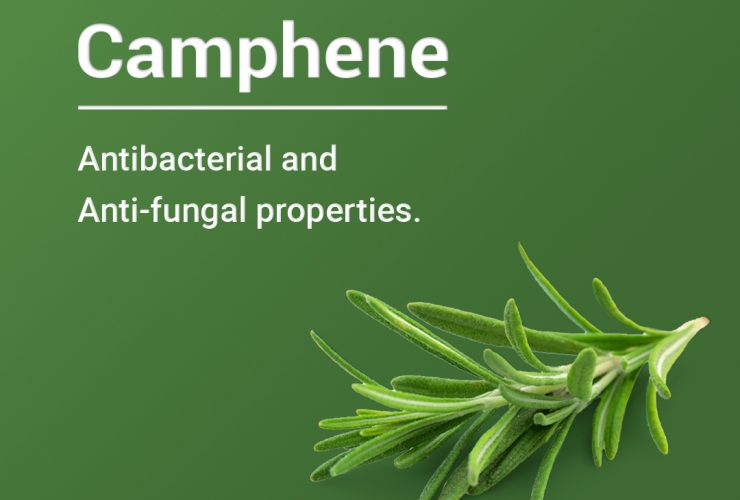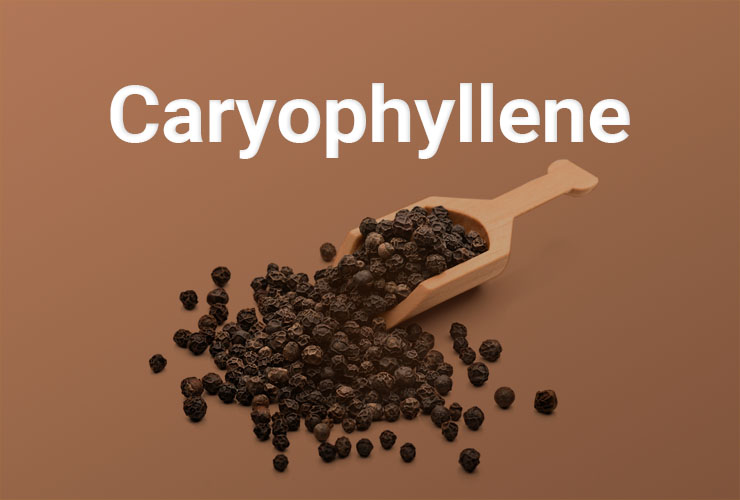Understanding Terpenes: Camphene

Written by
Camphene, sometimes called comphene, is one of more than 200 terpenes discovered to date in hemp and cannabis. Terpenes are aromatic molecules once thought to convey only aroma and, from an evolutionary functional perspective, to protect a plant from pests and predators. In recent years, however, much clinical research, in addition to anecdotal evidence, has revealed the medicinal efficacy of terpenes such as camphene.
Camphene conveys an aroma of earthy wood and fir needles (meaning it sometimes fools one’s olfactory sense into believing it is the similarly scented and most common terpene in cannabis, myrcene). This beneficial chemical is produced by a variety of plant species other than cannabis and hemp, including conifer, holy basil, nutmeg, and rosemary. Like other terpenes, it is commonly employed as a fragrance agent in beauty aids such as soaps, perfumes, and other topicals.
Medical Efficacy
In terms of its medicinal efficacy, camphene conveys a variety of benefits, including antibacterial and anti-fungal properties, making it a potentially valuable ingredient in skin care products intended to treat conditions such as eczema and psoriasis.
Much of the research conducted on this terpene, however, has investigated its ability to lower cholesterol and triglycerides in the treatment of cardiovascular disease and coronary heart disease. It has also been shown to act as an expectorant in the treatment of coughs and throat conditions.
The Studies
A 2016 research study entitled “Camphene, a Plant-derived Monoterpene, Exerts Its Hypolipidemic Action” that was published in the journal PloS One investigated the role of camphene in cardiovascular disease. Observed the researchers, “These data indicate that camphene probably lowers plasma triglycerides.”
The study’s authors concluded, “Given the critical role that the management of hyperlipidemia plays in cardiovascular disease, the results of our study provide insights into the development of camphene as a lipid-lowering agent.”
A 2011 research study entitled “Camphene, a Plant-derived Monoterpene, Reduces Plasma Cholesterol and Triglycerides in Hyperlipidemic Rats” that was published in the journal PloS One explored the potential ability of the camphene terpene to reduce cholesterol in an effort to prevent or treat coronary heart disease.
The researchers concluded, “The results of our study provide insights into the use of camphene as an alternative lipid-lowering agent and merit further evaluation.”
A 2009 study entitled “Plant Derived Antioxidants – Geraniol and Camphene Protect Rat Alveolar Macrophages Against t-BHP Induced Oxidative Stress” that was published in the journal Toxicology in Vitro investigated the efficacy for two terpenes, camphene and geraniol, in the treatment of pulmonary inflammation. The study’s authors noted that “Both the test substances geraniol and camphene increased the cell viability significantly.”
The researchers concluded that “Results indicate the pharmacological potential of these phytochemicals in lung inflammatory diseases where oxidative stress is a critical control point.”For more than 50 years, scientists have been investigating and learning the medicinal benefits of camphene. A 1970 study entitled “Nutmeg Oil and Camphene as Inhaled Expectorants” that was published in the journal JAMA Otolaryngology investigated the ability of camphene to act as an expectorant (esophageal therapy and cough treatment). Concluded the study, “Expectorant action appeared to be due to camphene.”


